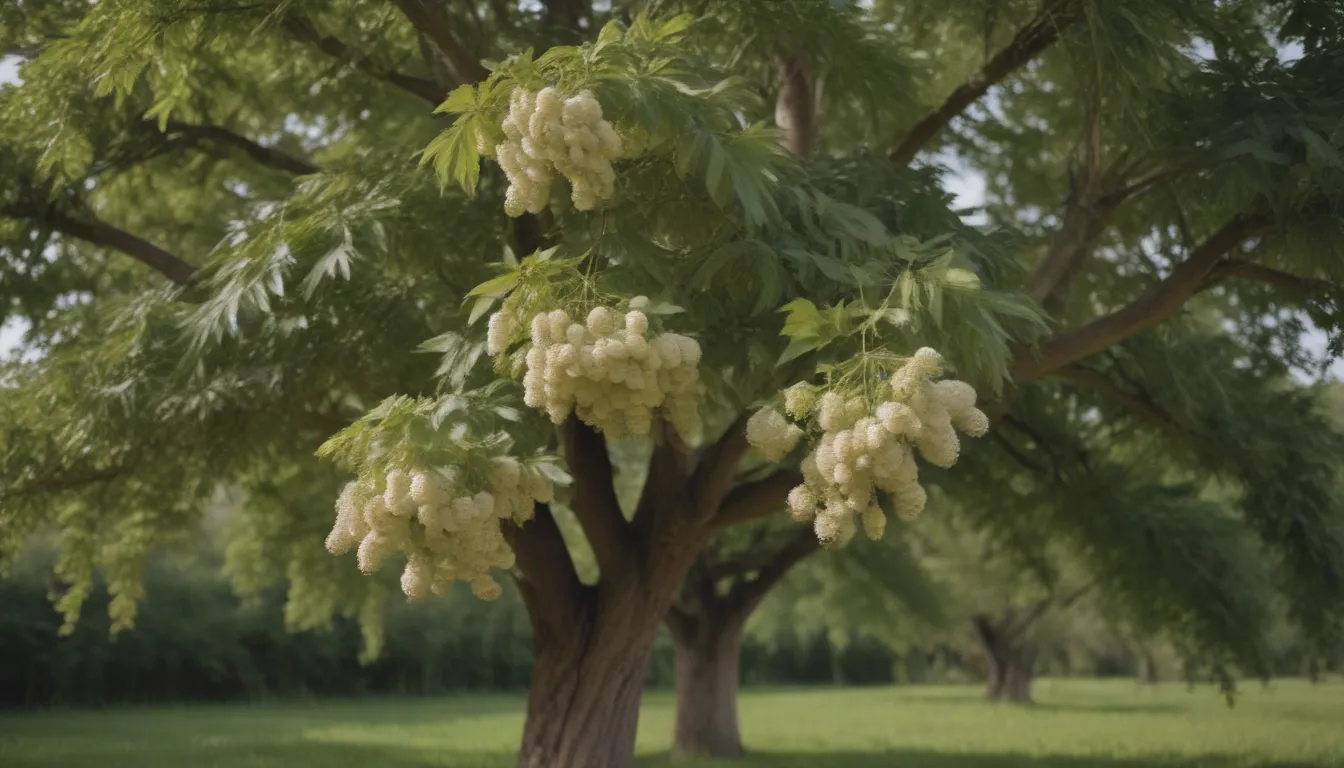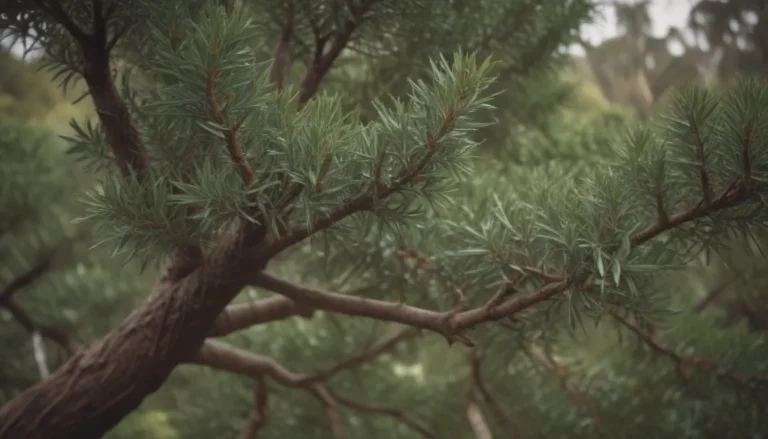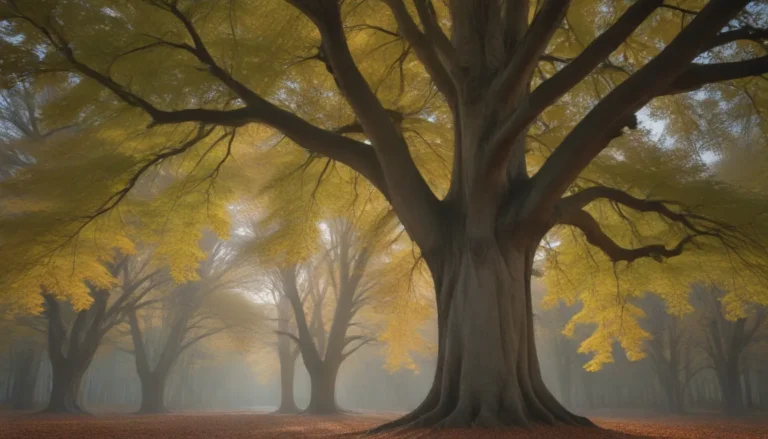The Ultimate Guide to Growing and Caring for White Mulberry Trees

If you’re looking to add a touch of nature to your landscape with a white mulberry tree, you’re in the right place. These trees are not only beautiful but also easy to care for and hardy in various conditions. Whether you’re a seasoned gardener or a beginner looking to expand your green thumb, this comprehensive guide will provide you with all the information you need to successfully grow and maintain white mulberry trees.
Introduction to White Mulberry Trees
White mulberry trees (Morus alba) are the most common type of mulberry tree found in North America. They are known for their blackberry-shaped fruit that starts off white and turns purplish-red as the season progresses. These trees are incredibly adaptable and can thrive in a wide range of conditions within their hardiness zone. However, it’s essential to note that the straight species of white mulberry is now considered invasive in many parts of the United States, affecting the ecosystem and established landscapes. It’s recommended to opt for non-invasive cultivars when planting white mulberry trees.
Main Care Requirements for White Mulberry Trees
Here are the key care requirements to keep in mind when growing and caring for white mulberry trees:
Light
White mulberry trees perform best when placed in an area that receives ample full sun. While they can tolerate part sun to partial shade, it’s ideal to plant cultivars in full sun for optimal growth.
Soil
One of the remarkable characteristics of white mulberry trees is their ability to thrive in almost any soil condition. From empty lots with construction debris to rich loamy soil, these trees can adapt well. Avoid consistently saturated soil and opt for well-draining soil with a neutral pH for the best results.
Water
Once established, white mulberry trees do not require supplemental watering and can withstand drought conditions. However, it’s crucial to water newly planted trees regularly to help them establish a robust root system. Water weekly during the growing season at a rate of 10 gallons per inch of trunk diameter to ensure healthy growth.
Temperature and Humidity
White mulberry trees are hardy and can withstand droughts and cold weather within USDA hardiness zones 4 through 8. However, their weak wood makes them susceptible to damage from strong winds or heavy ice and snow accumulation. Protect your tree from these weather conditions to ensure its longevity.
Fertilizer
Avoid adding supplemental fertilizer to white mulberry trees as they grow vigorously on their own. Fertilizing can speed up growth, weakening the wood and causing potential damage during storms. If necessary, conduct a soil test to determine any nutrient deficiencies before applying fertilizer.
Types of White Mulberry Trees
To avoid the invasive nature of white mulberry trees, consider planting cultivars that are sterile and do not produce fruit. Alternatively, explore other species of native mulberry trees for your area. Here are some fruitless white mulberry tree cultivars to consider:
- Morus alba ‘Chaparral’
- Morus alba ‘Pendula’
- Morus alba ‘Stribling’, ‘Urban’, ‘Kingan’
- Morus alba ‘Hampton’
Potting and Repotting White Mulberry Trees
Dwarf white mulberry trees are ideal for potting. Choose a large plastic container with adequate drainage holes to start. Repotting is necessary when roots start growing out of the bottom of the pot. Use a mix of potting soil and perlite for optimal growth. Ensure the tree receives full sunlight and water it regularly.
Pruning White Mulberry Trees
Regular pruning is essential to maintain white mulberry trees and prevent damage from winter weather and strong winds. Look for weak branches, damaged wood, and intersecting branches during the winter months. Remove any sprouted seedlings or saplings near the tree to control growth. Prune carefully to avoid causing damage to the tree.
Propagating White Mulberry Trees
Propagating white mulberry trees is easy using cuttings. Cut a 6 to 8-inch piece of a white mulberry tree and plant it directly in the ground. Alternatively, follow these steps for successful propagation:
- Take a cutting of a white mulberry tree.
- Plant the cutting in well-draining soil.
- Keep the soil moist until the cutting roots.
Common Pests & Plant Diseases
White mulberry trees are relatively resistant to pests and diseases. While bacterial leaf scorch, root rot, and cankers may occur occasionally, they are not life-threatening. Monitor for flies, whiteflies, and borers, especially attracted to fruit mess. Chemical intervention is rarely necessary, and most issues resolve with time.
How to Get White Mulberry Trees to Bloom
Understanding the blooming process of white mulberry trees can help you encourage more blooms or manage fruit drop. Here’s what you need to know:
Bloom Months
White mulberry trees flower from March to April.
White Mulberry Tree Flowers
The tree’s greenish-yellow flowers are spike-like clusters called catkins. Female trees produce shorter catkins than male trees. Fertilized flowers give way to berries in June. Encourage more blooms by providing sunlight, regular watering, and annual fertilization.
Common Problems With White Mulberry Trees
Aside from the invasive nature of white mulberry trees, there are a few common issues to be aware of:
Damaging Roots
The aggressive roots of white mulberry trees can lift and damage sidewalks, foundations, and sewer systems. Remove shoots from vulnerable areas to prevent damage.
Weak Trunks
Young white mulberry trees may have weak, fragile trunks that can break or topple in strong winds. Choose alternative mulberry species for better-tasting fruit and sturdier trunks.
Conclusion
White mulberry trees can add beauty and greenery to your landscape with proper care and maintenance. By following the guidelines outlined in this comprehensive guide, you can grow and care for white mulberry trees successfully. Remember to choose non-invasive cultivars, provide adequate sunlight, water, and soil conditions, and take precautions against potential issues. With the right approach, your white mulberry tree will thrive and enhance your outdoor space for years to come.
References:
- Boston University – How to grow mulberry trees in pots
- University of California Statewide Integrated Pest Management Program – Mulberry—Morus spp.
- University of Illinois College of Agricultural, Consumer & Environmental Sciences Extension – Not All Trees Are Good Trees
- Invasive Plant Atlas – White mulberry
Now, armed with this knowledge, go forth and cultivate your very own white mulberry tree paradise!





